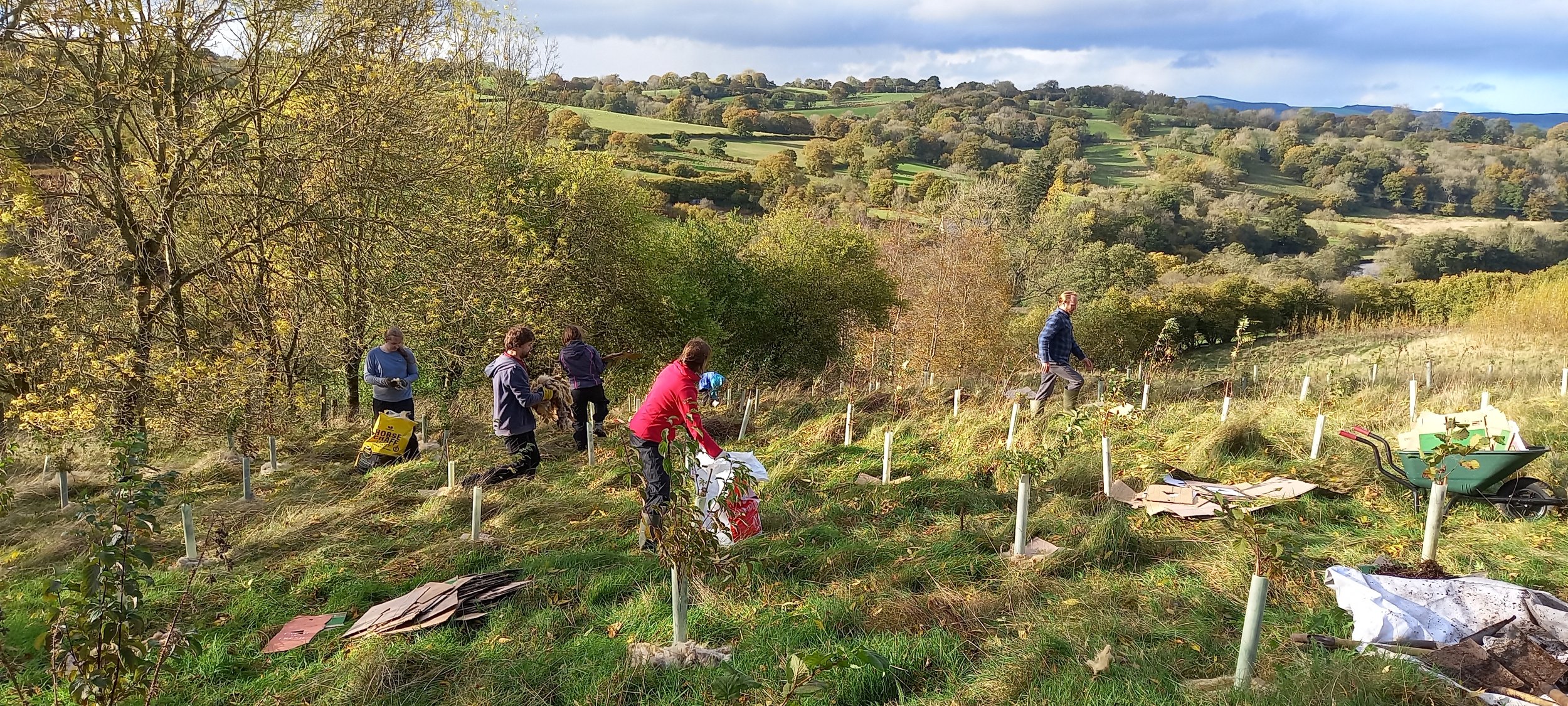Eco matting explained
Heard of eco matting/ mulch matting but not sure what it means? Be confused no longer.
In this short article, 9Trees co-founder Michael Cunningham will explain it to you.
To grow a tree
There is much more to growing a tree than might meet the eye. You could be forgiven for thinking that it is a simple case of grabbing a spade, digging a sapling into the soil, and letting ‘nature do the rest’. Such an approach may or may not work - it is like a gamble. To raise the odds of success and be truly effective, planting aftercare is therefore needed. This is especially true in the first few years of a tree’s life, when it is still a spindly collection of thin straggly roots, branches, buds and fragile leaves; vulnerable to the elements and fighting to get established. But the question then arises as to how to care for a sapling. This is where eco-matting comes in.
Growing a woodland takes a lot of care and knowledge, especially when the saplings are newly planted. (Image of a deciduous woodland such as those we are in the process of creating now!)
Eco-matting is the application of organic mulch around the base of a newly planted tree. Such mulch can take the form of cardboard, leaves, or grass cuttings followed by woodchip or wool; contrast this with inorganic mulches like gravel, plastic sheeting or old carpet (commonly used in growing allotment vegetables). Whereas the inorganic mulches persist in the environment or cause ecological harm when they do eventually disintegrate, organic mulches gently decompose, releasing their nutrients back into the soil.
How does mulch work?
When applied around a sapling’s base, mulch can be hugely beneficial. Firstly, it acts as a blanket, suppressing any weeds which would otherwise burst up, depriving the sapling of water, growing over it and suffocating it of sunlight. Secondly, mulch can give structure to the soil, turning a flat pancake into a complex landscape of valleys and hills. As a result, when it rains, the water does not simply rush off the soil surface, missing the sapling’s roots altogether, but instead gets held and then released more slowly. Finally, mulch acts as insulation: slowing the rate of heat transfer to and from the soil surface. This means that, on a hot day followed by a cold cloudless night, the soil is protected from sudden changes in temperature, thus reducing heat stress. Combine these things together and you have a sapling that can concentrate on putting its energy into growth rather than survival in a harsh world of competing weeds, floods and drought, heat and cold. Of course, these benefits apply to not only the saplings that we plant but also any that you may plant on your own.
It is however important that mulching is done well. Things like piling the mulch thickly around the base of a sapling can promote ‘collar rot’ and damage a tree, whilst also creating a steep slope (like a volcano) that causes water to quickly run away from the sapling’s roots.
Woodchip forms a key component of many organic mulches, together with cardboard, wool, and dry leaves.
Joining 9Trees on an eco-matting day: What you can expect
If you would like to join us on an eco-matting day, you can find our eco-matting sessions here. The days normally run from 9:30am to 3pm, although you can also come for a half day too. If you’d like to come to a session, just email us for more specific details and let us know if it’s for a full or half day).
All materials and tools (cardboard, woodchip, wheelbarrows and gloves etc.) are provided. All you need is a pair of sturdy walking boots and waterproofs (even if the forecast says sunshine only!) These sessions are a great chance to meet the team, fellow 9Trees’ members, and perhaps also your own trees! If you want to help with eco-matting and are part of a business, you can take part in a Team Green Away Day to get out into nature during the week!
We can’t wait to hear from you and see you soon! Thank you!
Eco-matting at one of the 9Trees’ sites in Powys!



